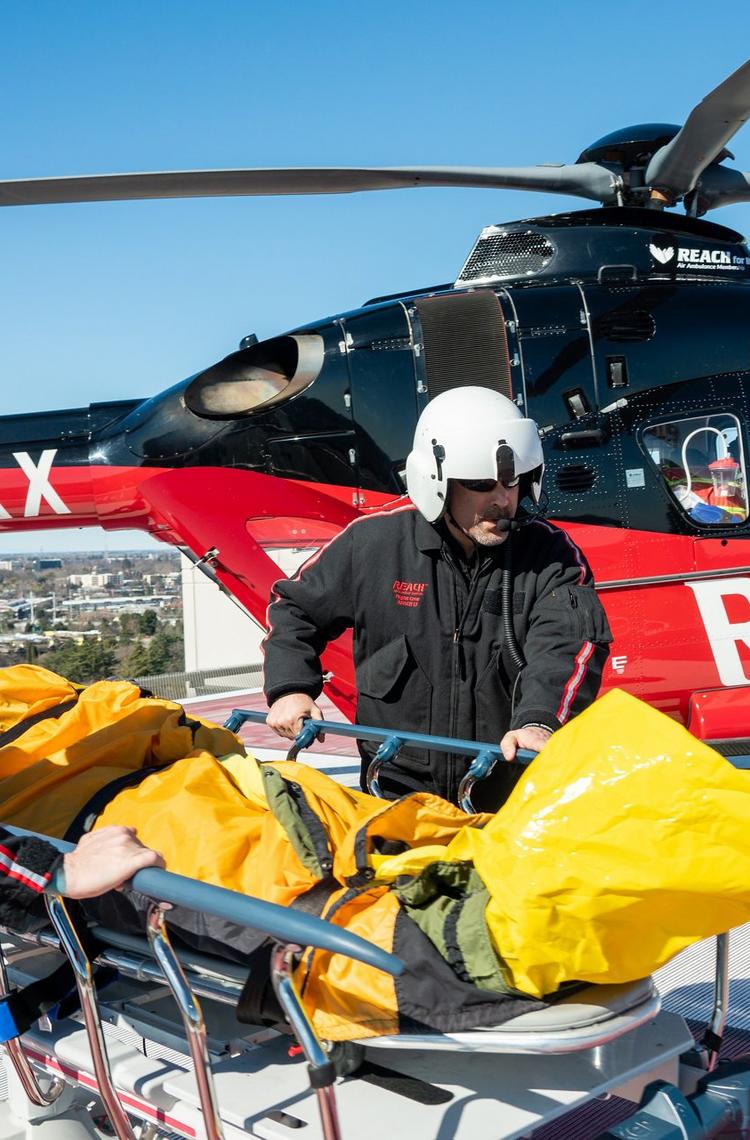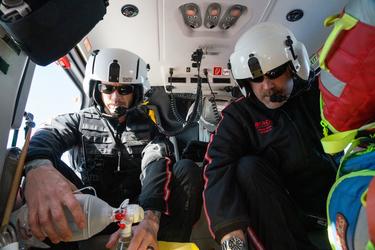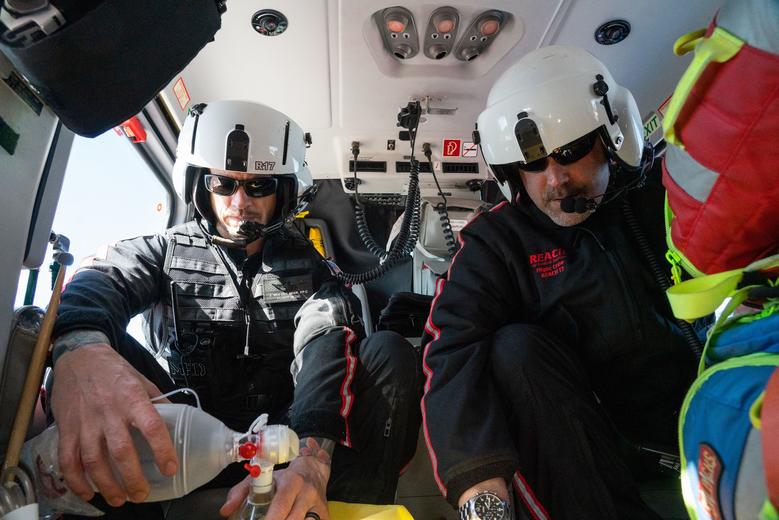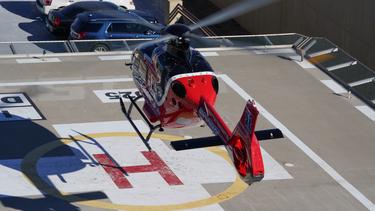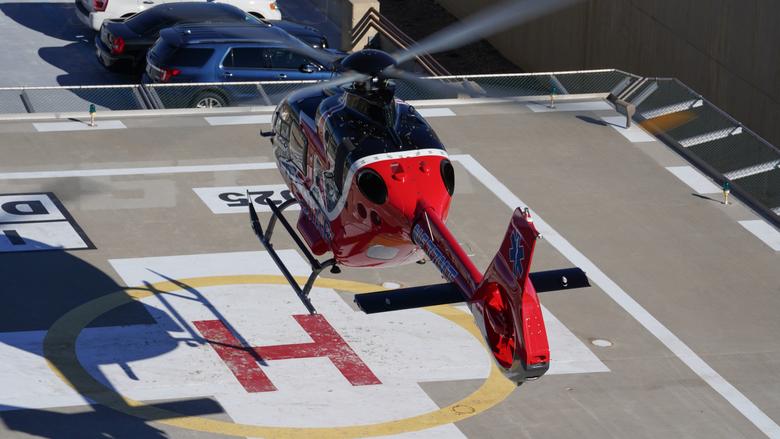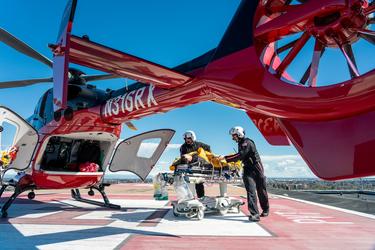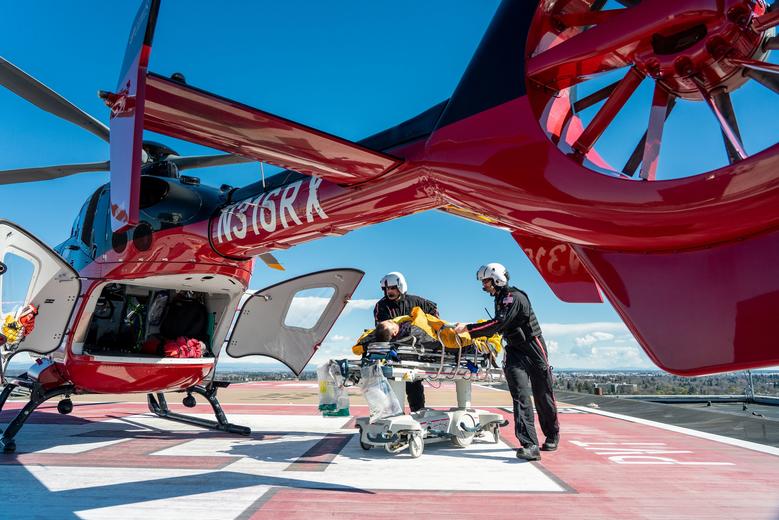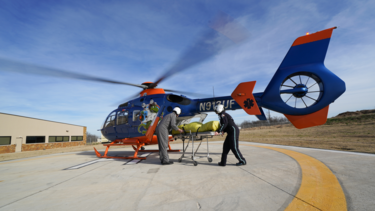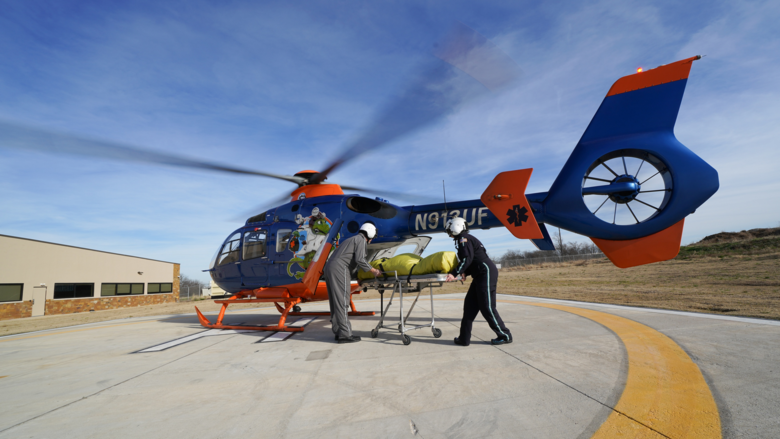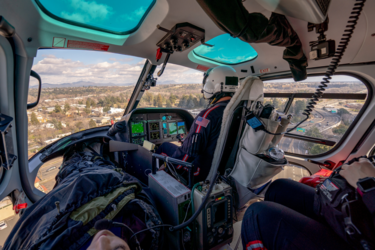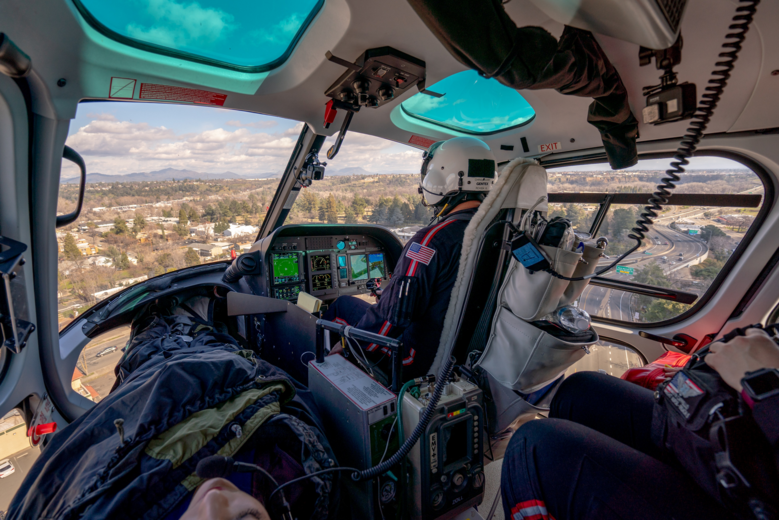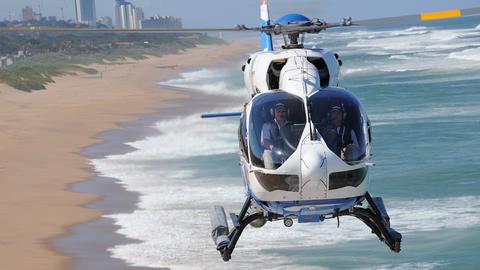Air medical transport relies on helicopters, from the H125 to twin-engine aircraft, to bring critically ill or injured people to intensive-care facilities. Here, we look at how one company in the U.S. fits into the picture.
“It’s often a case where somebody was in an accident, has for instance a cranial bleed, and was taken to the local hospital which doesn’t have the capability to repair the damage,” says Fred Buttrell, CEO of Air Medical Group Holdings, a provider of emergency and non-emergency airlifts to geographically dispersed communities. “We’ll do an air medical transport to a level 1 trauma centre or tertiary care centre.”
“Eighty percent of our transports come from rural or super-rural zip codes,” says Fred Buttrell, adding that the majority of flights involve trauma, cardiac arrest, stroke or acute respiratory failure, where time is of the essence.
As rural hospitals continue to close in the U.S., hundreds of communities are left miles from the nearest critical access hospital. In its June 2018 report to Congress, the Medicare Payment Advisory Commission reported that among hospital closures from 2013 to 2017, 21 of them were more than 20 miles from the next neighboring hospital.
In 2018, two of the U.S.’s largest EMS transport providers - Air Medical Group Holdings and American Medical Response – combined to form Global Medical Response (GMR). The company’s six air-based subsidiaries and dozens of ground ambulances now provide emergency medical transport for 46 states and the District of Columbia.
The company’s six air-based subsidiaries and dozens of ground ambulances provide emergency medical transport for 46 states and the District of Columbia.
Delivering local solutions
“For many health systems, transportation and patient throughput is a pain point,” says Fred Buttrell. “We offer the ability to deliver transport at a local level. We are fortunate to be in the situation of being a global medical response organisation with a local solution.”
At Heli-Expo 2019, GMR announced a firm order with Airbus for 21 helicopters. The order will allow the transport provider to expand into new markets, replace its aging aircraft, and bolster services to customers.
“Eighty percent of our transports come from rural or super-rural zip codes,” says Fred Buttrell, adding that the majority of flights involve trauma, cardiac arrest, stroke or acute respiratory failure, where time is of the essence.
In 2018, two of the US’s largest EMS transport providers - Air Medical Group Holdings and American Medical Response – combined to form Global Medical Response (GMR). The company’s six air-based subsidiaries and dozens of ground ambulances now provide emergency medical transport for 46 states and the District of Columbia.
Specialty aircraft for special services
Over 400 aircraft – both helicopters and fixed-wing – are at AMGH’s disposal through its six subsidiaries. One such company, Med-Trans, operates the H125, H130, H135, and the H155 from 29 states in the U.S. southeast. “We’ve grown with Airbus over time for either our acquisition or new aircraft needs, and our fleet replacement strategy has allowed us to expand into the H125 and H130 markets,” says Robert Hamilton, President of Med-Trans Corporation.
One of the considerations in acquiring new aircraft is the ability to tailor air medical services to the local population or specialty segments. “The H130’s large cabin and increased payload will allow us to do more pediatric transports,” says Fred Buttrell. “The H135 is our IFR specialty transport capability, mostly in partnership with health systems that want to have that mission profile as part of their continuum of care. And the H125 has been a very good helicopter for us, especially in high-density altitudes in the west [of the U.S.] where we can continue to provide service without compromising on patient weight.”
At Heli-Expo 2019, GMR announced a firm order with Airbus for 21 helicopters. The order will allow the transport provider to expand into new markets, replace its aging aircraft, and bolster services to customers.
The H130’s large cabin and increased payload will allow us to do more pediatric transports.
- Fred Buttrell, CEO of Air Medical Group Holdings
Dedication to the mission
The sheer variety of missions air ambulance organisations take part in is a testament to their service. Since the start of 2019, Med-Trans’ social media page makes mention of the safe transfer of a critical care patient in high winds, the recovery of stroke victims airlifted by the company, and inaugurating one of their aircraft for an NICU* flight.
It also mentions the dedication involved for men and women for whom “EMS is a calling,” as Fred Buttrell puts it. Air ambulance crews and paramedics number among some of the industry’s most experienced; paramedics first must work a certain number of years as EMTs and undergo paramedic training before getting certified to work on an air ambulance crew.
“As a clinician, when I got into the air medical business in the early 90s it was in an Airbus product,” says Robert Hamilton. “I get the opportunity to speak first-hand from a clinical background as to the confidence that an Airbus product has given me personally for many years. The stories that I can think of are just so many.”
*NICU: neonatal intensive care unit
